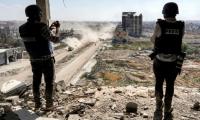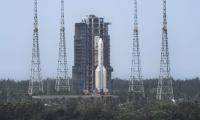A World Bank report, released on Thursday, highlighted the plight of Pakistan’s biggest city, and also suggested measures needed to be taken to preserve its position as the country’s main growth driver.
The report titled ‘Pakistan Development Update – Making growth matter’ launched in collaboration with the Sindh government, devoted an entire chapter to the various problems plaguing the city.
It stated that Karachi continued to rank among the bottom 10 cities in the 2015, Global Liveability Index.
Regional conflicts, organised crime, and social and ethnic tensions arising from an incoming tide of immigrants holds the city’s security hostage, the report stated.
Despite it being Pakistan’s economic and industrial hub, the city’s infrastructure and institutions were in a dire condition. It had become prone to natural disasters such as floods, earthquakes, tsunamis, water scarcity and heat waves.
“Karachi faces a complex political environment, ad hoc planning, poor governance, and weak financial and institutional capacities,” the report further maintained.
Water scarcity was termed the most serious and imminent problem since the water supply available only met 55 percent of the city’s needs.
The city lacked infrastructure to treat and dispose of sewerage water. Every year 475 million gallons of sewerage water was released directly into the open sea without any treatment.
Holding bad governance responsible for water scarcity, the report stated that the city had no formal policy for water supply and sanitation. It further noted that only 50 percent of the garbage that the city produces was sent to landfill sites.
As per the report, Karachi was vulnerable to diseases linked to environmental degradation, especially those stemming from pollution and stagnant sewage. Lack of urban planning, poor infrastructure and inadequate emergency rescue services had made the city extremely vulnerable in the event of natural disasters such as earthquakes.
There was no central public transport network in the city and no transport policy, it further maintained, wheras approximately 42 percent of its residents relied on public transport, yet the city had only vehicles which could facilitate only 5 percent of the population.
The city’s nutrition shortage was also brought into light and attention was also drawn on chronic malnutrition in Pakistan. It noted that the country had the third-highest stunting (low height according to age) rate in the world.
Commuters make their way through a partially deserted bridge in Karachi. — AFP/FileNauTarangT2F, in collaboration...
World-renowned guitarist Thibault Cauvin during a performance on April 20, 2024. — Facebook/Alliance française de...
This representational image shows the hands of an incarcerated person. — AFP/FilePolice on Thursday claimed to have...
A representational image of a police tape wrapped on a tree at a crime scene. — AFP/FileA man was gunned down near...
The sui gas meters can be seen in this picture. — APP FileIn a relentless effort to control the menace of gas theft,...
Removes illegal encroachment during anti encroachment drive under the supervision of Karachi Municipal Corporation ...







